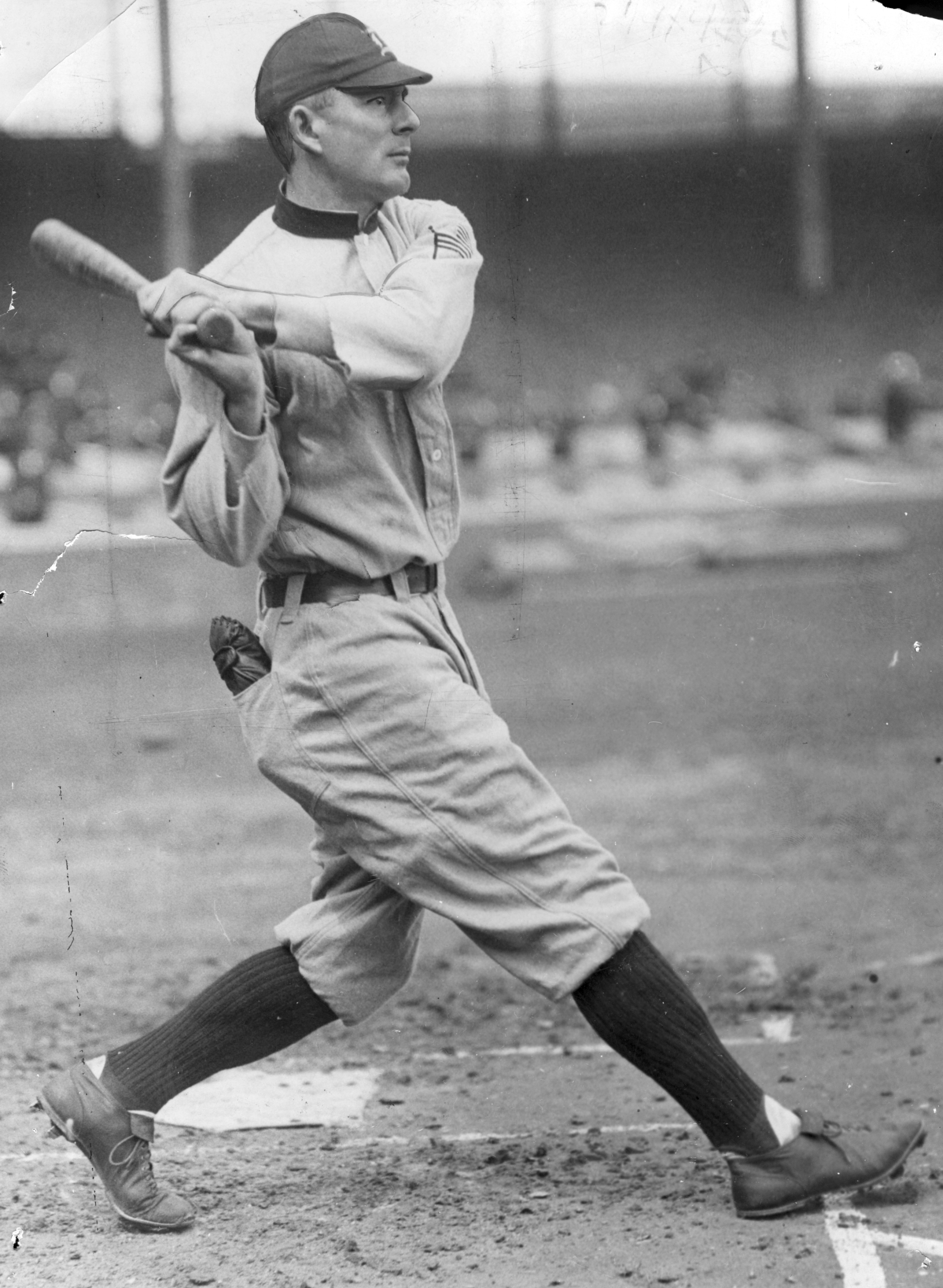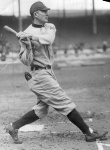The Longest Streaks of Consecutive Games in Which a Detroit Tiger Has Scored a Run (1920–44)
This article was written by Herm Krabbenhoft
This article was published in Spring 2011 Baseball Research Journal
In a companion article, “The Authorized Correction of Errors in Runs Scored in the Official Records (1920–44) for Detroit Tigers Players“, I described my findings on the accuracy of Major League Baseball’s official runs-scored statistics for each Detroit Tigers player from 1920 through 1944. I discovered and corrected 57 runs-scored errors affecting 37 players, including four Hall of Famers. Significantly, based on the ironclad supporting documentation I provided to them, the Elias Sports Bureau (the official statisticians of MLB), eventually approved each of the corrections/changes to the official baseball records.1
 So, having firmly established an accurate, official game-by-game runs-scored database, I am able to reliably ascertain the longest Consecutive Games Run Scored (CGRUNS) streak achieved by each Detroit Tigers player in each season during the period from 1920 through 1944. Some of the results of my CGRUNS streak research are described in this article.
So, having firmly established an accurate, official game-by-game runs-scored database, I am able to reliably ascertain the longest Consecutive Games Run Scored (CGRUNS) streak achieved by each Detroit Tigers player in each season during the period from 1920 through 1944. Some of the results of my CGRUNS streak research are described in this article.
HISTORICAL BACKGROUND
The major league record for the longest CGRUNS streak is 24 games by Billy Hamilton of the 1894 Philadelphia club. The American League record is 18 straight games, shared by Red Rolfe of the 1939 New York Yankees and Kenny Lofton of the 2000 Cleveland Indians. The post-1900 mark in the senior circuit is 17 games, by Rogers Hornsby of the 1921 St. Louis Cardinals and Ted Kluszewski of the 1954 Cincinnati Redlegs.2
The record for the longest CGRUNS streak by a player on the Detroit Tigers has apparently not yet been reported. In a previous article, I described my findings on the determination of the longest CGRUNS streak by a Tigers player during the period 1945-2008.3 For that 64-year period, Johnny Groth of the 1950 Tigers assembled the longest CGRUNS streak, a 13-gamer.4
RESEARCH PROCEDURES
The official DBD records (with the officially-authorized runs-scored corrections applied) for Detroit Tigers players were examined to ascertain the longest CGRUNS streak for each player for each season during the period from 1920 through 1944.5
Major League Baseball’s official rules do not specifically cover CGRUNS streaks.6 Therefore, I used the following guidelines to define the extension or termination of a CGRUNS streak:
- If a player scores at least one run in a game, that game extends the CGRUNS streak.
- If a player completes at least one plate appearance in a game but does not score at least one run, that game terminates the CGRUNS streak.7
- If a player is used only as a pinch runner in a game and does not score at least one run, that game terminates the CGRUNS streak.
- If a player is used only as a defensive player in a game (and thus does not have a completed plate appearance), that game does not terminate the CGRUNS streak.
- If a player is announced as a pinch hitter and is then replaced by another pinch hitter (and thus does not have a completed plate appearance), that game does not terminate his CGRUNS streak. Similarly, if a player enters the game as a pinch hitter, but the inning ends via a caught-stealing or a pickoff before he can complete his plate appearance, that game does not terminate the CGRUNS streak.
- If a player had at least one opportunity to score a run in a game, he must have scored at least one run in that game in order to extend his CGRUNS streak; if he had at least one opportunity to score a run in a game and did not score his CGRUNS streak is terminated.8
RESULTS AND DISCUSSION
Table 1 lists the player(s) who compiled the longest CGRUNS streak for the Tigers in each season during the 1920–44 period.
An * indicates that the player led the team in runs scored that season. It is interesting to note that the Tigers player who fashioned the longest CGRUNS streak led the team in runs scored only six times during the 25 seasons covered in Phase Two.
Inspection of Table 1 shows that Doc Cramer assembled the longest CGRUNS streak from 1920–44, scoring at least one run in 16 straight games from August 30 through September 17, 1944 (first game). Cramer’s 16-gamer is the longest streak for a Detroit Tigers player from 1920 through 2010.9 Moreover, Cramer’s 16 CGRUNS streak falls just two games shy of the American League record.2
The Tigers player who led his team the most times in longest CGRUNS streaks from 1920 through 1944 is Charlie Gehringer; “The Mechanical Man” led the team four times.
Considering the 91-year period from 1920 through 2010, Table 2 presents a list of all Tigers players with single-season CGRUNS streaks of at least 10 games.
Inspection of Table 2 reveals that Charlie Gehringer and Hank Greenberg each had three CGRUNS streaks of at least ten games, while Harry Heilmann and Doc Cramer had two CGRUNS streaks of ten or more. The last Detroit player to have accomplished a double-digit CGRUNS streak was Dean Palmer in 1999.
CONCLUSION
In my research program to ascertain the player with the longest CGRUNS streak for the Detroit Tigers since 1901, I have completed Phase One (1945 to the present) and Phase Two (from 1920 through 1944).10, 11
Employing the relevant official DBD records, including the officially-sanctioned corrections of the runs-scored errors I discovered, I have determined that Doc Cramer’s 16-game CGRUNS string in 1944 is the longest for the Detroit Tigers since 1920. In Phase Three, I will address the 1901–19 period and complete the project.
HERM KRABBENHOFT, a SABR member since 1981, has documented—via official scorecards or game-action newspaper photos—the uniform number(s) of every Detroit Tigers player, manager, and coach for each season from 1931 forward except Frank Doljack (1932), Luke Hamlin (1933), and Roxie Lawson (1933). He is seeking a photocopy of an official Detroit Tigers scorecard from May 1, 1945 or May 2, 1945 (against the White Sox) in order to learn the uniform number of Dutch Meyer, a “phantom” Tiger that season.
Notes
1 Herm Krabbenhoft, “The Authorized Correction of Errors in Runs Scored in the Official Records (1920–44) for Detroit Tigers Players,” The Baseball Research Journal, submitted for publication, 31 August 2010.
2 Seymour Siwoff, The Elias Book of Baseball Records, (New York: Elias Sports Bureau, 2010), 383.
3 Herm Krabbenhoft, “The Longest Streaks of Consecutive Games in Which a Detroit Tiger Has Scored a Run (1945–2008),” The Baseball Research Journal, 37 (2008):123.
4 Herm Krabbenhoft, “The Longest Streaks of Consecutive Games in Which a Detroit Tiger Has Scored a Run (1945–2008),” The Baseball Research Journal, 37 (2008):123.
5 Herm Krabbenhoft, “The Authorized Correction of Errors in Runs Scored in the Official Records (1920–44) for Detroit Tigers Players,” The Baseball Research Journal, submitted for publication, 31 August 2010.
6 The Official Baseball Rules (copyright 2010 by the Commissioner of Baseball) are available online at mlb.com. “Rule 10.23 Guide- lines for Cumulative Performance Record” deals with consecutive streaks: consecutive hitting streaks, consecutive-game hitting streaks, and consecutive-game playing streaks.
7 There can be situations in which a player completes at least one plate appearance in a game without scoring a run and yet that game does not terminate the CGRUNS streak. For example, consider the following scenario: The player is used as a pinch hitter and gets on base by being hit by a pitched ball on the first pitch delivered to him; the player is then immediately replaced by a pinch runner. Because the player did not have an opportunity to score a run (the ball is dead upon hitting the batter), that game does not terminate his CGRUNS streak.
8 There can be situations in which a player completes at least one plate appearance in a game without scoring a run and yet that game does not terminate the CGRUNS streak. For example, consider the following scenario: The player is used as a pinch hitter and gets on base by being hit by a pitched ball on the first pitch delivered to him; the player is then immediately replaced by a pinch runner. Because the player did not have an opportunity to score a run (the ball is dead upon hitting the batter), that game does not terminate his CGRUNS streak.
9 According to the player daily records provided on the Retrosheet website, the Tigers players with the longest CGRUNS streaks in the 2009 and 2010 seasons are Magglio Ordonez (8) and Austin Jackson (7), respectively.
10 Herm Krabbenhoft, “The Longest Streaks of Consecutive Games in Which a Detroit Tiger Has Scored a Run (1945–2008),” The Baseball Research Journal, 37 (2008):123.
11 Herm Krabbenhoft, “The Longest Consecutive Games RUN Scored (CGRUNS) Streaks by Detroit Tigers Players (1920–44),” Baseball Records Committee Annual Meeting, Society for American Baseball Research National Convention, Atlanta, GA, 7 August 2010.




